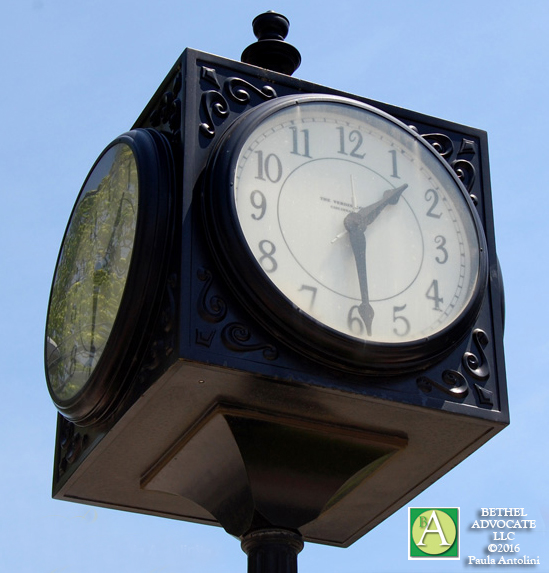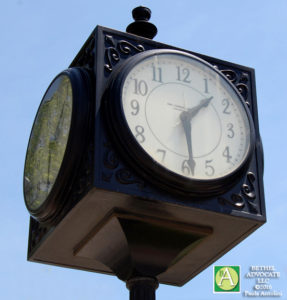
Daylight Saving Time (DST) is used to save energy and make better use of daylight.
Report by Paula Antolini
March 10, 2017 7:00PM EDT
Daylight Saving Time 2017, When To Change the Clocks
Remember to change your smoke detector batteries this Sunday… Remind your neighbors, friends and family.
Daylight Saving Time (DST) begins this Sunday, March 11, 2017. Turn your clocks back 1 hour at 2:00:00 AM (or turn clocks back before you go to sleep on Saturday night).
Daylight Saving Time (DST) is used to save energy and make better use of daylight. DST normally adds 1 hour to standard time with the purpose of making better use of daylight and conserving energy. This means that the sunrise and sunset are one hour later, on the clock, than the day before.
At the beginning of the DST period in the spring, clocks are moved forward, usually by one hour. When DST ends in fall (autumn), clocks are turned back again. DST does not add daylight, but it gives more usable hours of daylight. In that sense, DST “saves” daylight, especially during early spring. Standard time refers to time without DST.
*****
Nov 6, 2016 – Daylight Saving Time Ended
When local daylight time was about to reach
Sunday, November 6, 2016, 2:00:00 AM clocks were turned backward 1 hour to
Sunday, November 6, 2016, 1:00:00 AM local standard time instead
Sunrise and sunset were about 1 hour earlier on Nov 6, 2016 than the day before. There was more light in the morning.
Also called Fall Back and winter time.
*****
What we did earlier in the 2016 year:
Mar 13, 2016 – Daylight Saving Time Started
When local standard time is about to reach
Sunday, March 13, 2016, 2:00:00 AM clocks are turned forward 1 hour to
Sunday, March 13, 2016, 3:00:00 AM local daylight time instead
Sunrise and sunset will be about 1 hour later on Mar 13, 2016 than the day before. There was more light in the evening.
Also called Spring Forward, summer time, and Daylight Savings Time
*****
History of Daylight Saving Time — DST
First Used in Canada in 1908: In July, 1908, Thunder Bay in Ontario, Canada became the first location to use DST. Other locations in Canada were also early to introduce Daylight Saving bylaws. On April 23, 1914, Regina in Saskatchewan, Canada implemented DST. The cities of Winnipeg and Brandon in Manitoba followed on April 24, 1916. According to the April 3, 1916, edition of the Manitoba Free Press, Daylight Saving Time in Regina “proved so popular that bylaw now brings it into effect automatically”.
Germany First Country to Use DST: Germany became the first country to introduce DST when clocks were turned ahead 1 hour on April 30, 1916. The rationale was to minimize the use of artificial lighting in order to save fuel for the war effort during World War I. The idea was quickly followed by the United Kingdom and many other countries, including France. Many countries reverted back to standard time after World War I, and it wasn’t until the next World War that DST made its return in most of Europe.
Ancient Civilizations: Although DST has only been used for about 100 years, the idea was conceived many years before. Ancient civilizations are known to have engaged in a practice similar to modern DST where they would adjust their daily schedules to the Sun’s schedule. For example, the Roman water clocks used different scales for different months of the year.
Benjamin Franklin: American inventor and politician Benjamin Franklin wrote an essay called “An Economical Project for Diminishing the Cost of Light” to the editor of The Journal of Paris in 1784. In the essay, he suggested, although jokingly, that Parisians could economize candle usage by getting people out of bed earlier in the morning, making use of the natural morning light instead.
Hudson and Willett: In 1895, New Zealand scientist George Vernon Hudson presented a paper to the Wellington Philosophical Society, proposing a two-hour shift forward in October and a two-hour shift back in March. There was interest in the idea, but it was never followed through.
In 1905, independently from Hudson, British builder William Willett suggested setting the clocks ahead 20 minutes on each of the four Sundays in April, and switching them back by the same amount on each of the four Sundays in September, a total of eight time switches per year.
First Daylight Saving Bill: Willett’s Daylight Saving plan caught the attention of Member of Parliament, Robert Pearce, who introduced a bill to the House of Commons in February 1908. The first Daylight Saving Bill was drafted in 1909, presented to Parliament several times and examined by a select committee. However, the idea was opposed by many, especially farmers, so the bill was never made into a law. Willett died in 1915, the year before the United Kingdom started using DST in May 1916.
###


Leave a Reply